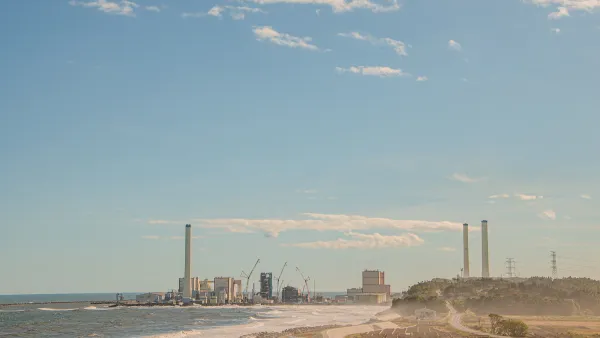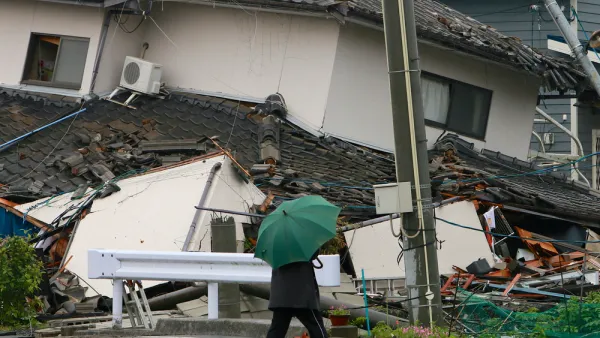Having just returned from a United Nations-led tour of disaster-ravaged areas of Japan, Warren Karlenzig reports on efforts across the region to rebuild along smart growth and green economic development models.
With the one-year anniversary of the Tōhoku earthquake and tsunami and Fukushima Daiichi nuclear accident fast approaching, Karlenzig recently toured six tsunami-damaged communities and two radiation-impacted cities in Northern Japan as part of a UN Center for Regional Development (UNCRD) fact-finding mission, one of the first (if not the first) from outside the three affected prefectures to meet with local leaders on reconstruction and post-disaster management planning.
Although the full rebuilding effort will not begin for several years due to a number of factors (unstable ground, waste removement, etc.), many communities have already submitted reconstruction plans including land use schemes to the national government, and Karlenzig points to the plans of two particular tsunami-ravaged cities that stand out for being smart growth models.
In Ishinomaki,a pre-tsunami city of about 160,000 which had the most tsunami deaths of any city, "has a plan to virtually wipe clean its remaining 'ghost' downtown to create a mixed-use residential-commercial zone that will be 2-3 times as denser than before," writes Karlenzig. He also sees transit-oriented redesign as a strategy being utilized to keep and attract younger citizens.
With the country scrambling to replace the 25-30% of the nation's energy supply that came from now mostly shuttered nuclear facilities, quickly growing the country's renewable energy production will be of importance nationwide, and as the basis for developing the economies of disaster-ravaged areas.
"Rikuzentakada, a city of 22,000 (2,000 died in the tsunami), is making plans to make 'new energy' a key part of its redevelopment vision. This city which was reported to have been "wiped off the map," by 65-foot (19.2 meter) waves is today pursuing national government subsidies and private investments to create large-scale distributed generation of renewables, including PV solar, land biomass (wood), marine biomass and offshore wind."
Later this month, Karlenzig's delegation will work with UNCRD to develop recommendations based on their visit.
FULL STORY: Japan's Green Renewal? After the Disasters UN Tour

Analysis: Cybertruck Fatality Rate Far Exceeds That of Ford Pinto
The Tesla Cybertruck was recalled seven times last year.

National Parks Layoffs Will Cause Communities to Lose Billions
Thousands of essential park workers were laid off this week, just before the busy spring break season.

Retro-silient?: America’s First “Eco-burb,” The Woodlands Turns 50
A master-planned community north of Houston offers lessons on green infrastructure and resilient design, but falls short of its founder’s lofty affordability and walkability goals.

Test News Post 1
This is a summary

Analysis: Cybertruck Fatality Rate Far Exceeds That of Ford Pinto
The Tesla Cybertruck was recalled seven times last year.

Test News Headline 46
Test for the image on the front page.
Urban Design for Planners 1: Software Tools
This six-course series explores essential urban design concepts using open source software and equips planners with the tools they need to participate fully in the urban design process.
Planning for Universal Design
Learn the tools for implementing Universal Design in planning regulations.
EMC Planning Group, Inc.
Planetizen
Planetizen
Mpact (formerly Rail~Volution)
Great Falls Development Authority, Inc.
HUDs Office of Policy Development and Research
NYU Wagner Graduate School of Public Service



























